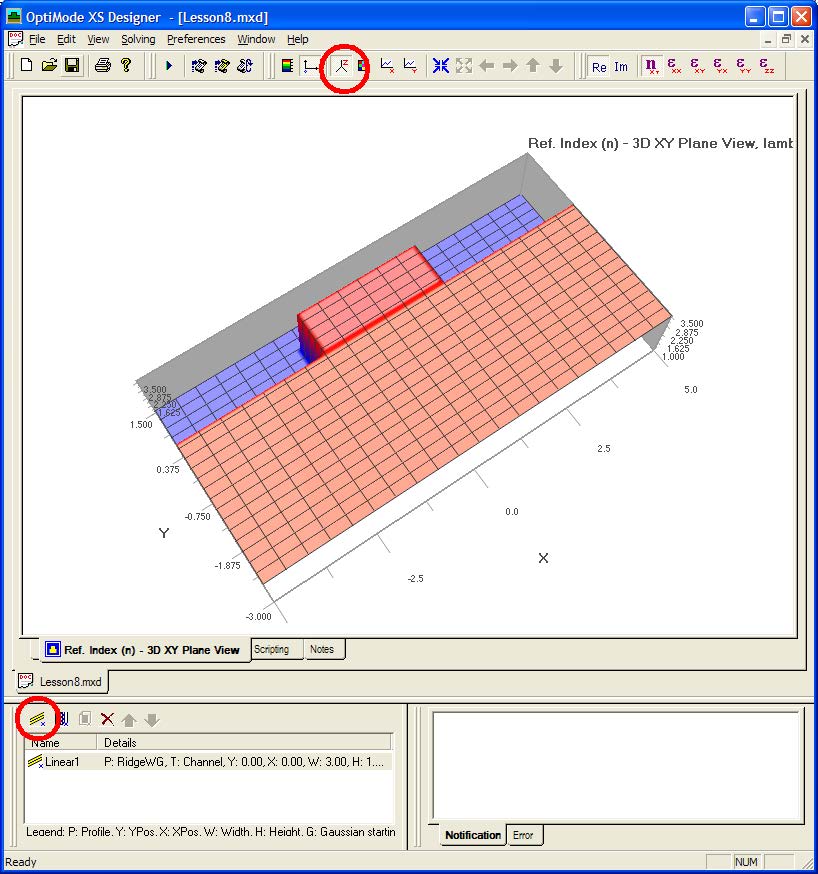To define the waveguide, perform the following procedure.
| Step | Action |
| 1 | In the Initial Properties dialog box, type/select the following:
a. Default Waveguide: Width: 3 Profile: RidgeWG b. 3D Wafer Properties Width: 10 c. 3D Wafer Properties (see Figure 4): Cladding Material: Air Thickness: 1.5 Substrate material: Substrate d. Thickness: 3 |
Figure 4: Selecting 3D Wafer Properties
| 2 | To apply the settings to the layout, click OK.
The Initial Properties dialog box closes. The application will display the refractive index distribution of the transverse plane with the cladding and substrate. Save the project. The name of the project will replace the default name in the Profile Designer directory that defines this projectís profiles and materials. |
| 3 | To add the waveguide to the top of the substrate, click on the Waveguide icon in the Layout Properties window. The refractive index contrast is low, but the difference can be made more visible by using the Height Plot setting and rotating the view to emphasize contrast. Both buttons are circled in red in Figure 5. |
Figure 5: Waveguide on top of Substrate
| 4 | Double click on the Linear 1 Waveguide to confirm the following data.
X Position = 0.0 Width = 3.0 Y Position = 0.0 Height = 1.0 (a read-only value) Label = Linear 1 Profile = RidgeWG |



